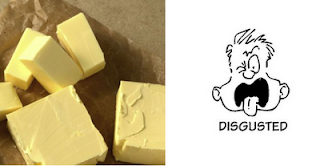- This post is a joke, a weird parody of academic research, which is why it is labeled “humor” and is being filed under “Abstract humor”. In my reading of academic articles I often come across articles with a lot of problems – interpretation biases, idiotic self-citation, moronic research designs, misguided immodesty, exaggerated political correctness, fake markers of high moral standards, nonsensical quantitative analysis etc. I decided to write a short post on a fictitious study that has all of these problems (a challenge).
- I apologize for this spoiler. Some people probably like humor posts better if they do not know what they are in advance, but several others may think that reading a post like this is a waste of their time. If you are in the latter category, move on to another post! If not, here it goes …
***
New groundbreaking forthcoming research by Drs. Deth and Disis (full reference at the end of this post) shows beyond much doubt that obesity is protective against disease. The research also implicates butter as a powerful disease-promoting agent. The research is forthcoming in the journal Butter Toxicity Review.
(Sources: Topnews.us and Flickr.com)
The journal is listed as an “elite”-level journal on the website of the Society for Research on Butter and its Negative Health Effects (SRBNHE). I thank the researchers for sharing their findings with a select group of notable scholars, of which I can humbly say I am part, well in advance of its official publication. Another seminal study by the same researchers has been cited in this post.
The study followed 2,301 male participants over a period of 13.3 years. Their ages ranged from 20 to 37 years. Approximately half of them were morbidly obese, with body fat percentages of 60 or higher. That is, more than half of these individuals’ bodies were pure fat! These obese individuals were matched against an age-compatible control group of fit men with a mean body fat percentage of 9.2.
The focus of the study was on sexually transmitted diseases among individuals with high moral standards. Because of that, the researchers noted that: “A small group of individuals, who admitted to availing themselves of adult entertainment services, and/or services of a similarly immoral nature, were excluded from the study.”
Among the fit individuals, 15.7 percent contracted one or more types of sexually transmitted diseases during the 13.3-year period. Only 3.1 percent of the obese individuals contracted ANY sexually transmitted disease. This difference was statistically significant at the .001 level (i.e., very significant), even when the researchers controlled for various demographic factors.
Even more interesting were the patterns of risk-avoidance behavior observed. The vast majority of the fit individuals (84.3 percent, to be more precise) reported using protective items (i.e., condoms). However, NONE of the obese individuals used those. And yet, the obese individuals had significantly less incidence of sexually transmitted diseases.
The researchers concluded that: “It is abundantly clear from this research that obesity, especially at the levels found in this study, is protective against sexually transmitted diseases.”
There were only two apparent anomalies. Among the 3.1 percent of obese individuals who contracted sexually transmitted diseases, approximately 97 percent scored very high on “NTW”, a variable that measured the net worth in dollars of the individuals, including accumulated parental allowances.
The other 3 percent (of the 3.1 percent of obese individuals) scored low on NTW but very high on a latent variable called “FBC”, based on a perceptual 11-indicator, 7-point Likert scale measurement instrument, whose anchor indicator referred to the question-statement: “He is fat but cute.” The respondents for FBC were a random group of female protesters who threatened to denounce the study for what they alleged was discrimination against adult entertainers.
Regarding these apparent anomalies, the researchers noted that: “The association with FBC calls for additional research, and does not invalidate the overall results, since it involved a very small percentage of the individuals studied (3 percent of 3.1 percent, or 0.093 percent). However, we have strong reasons to believe that the association with NTW reflects an underlying predisposition toward elevated consumption of butter.”
The researchers cited previous theoretical research, which they also co-authored and published in the same elite journal, which provides a solid basis for this suspicion. That seminal theoretical research points to a clear but complex link between being very obese/rich and: (a) elevated butter consumption; and (b) susceptibility to diseases of any kind, caused by the elevated butter consumption.
Again, I would like to thank Drs. Deth and Disis for their advance sharing of their groundbreaking findings. Their brilliance is only matched by their humility; they noted at the end of their report that: “While this groundbreaking research clearly points to the protective effects of extreme obesity, and to one more possible negative effect of butter consumption, we believe that much more research is needed to further elucidate the nature of the negative effects of this known toxin.”
Reference:
Deth, R., & Disis, M. (forthcoming). STD incidence and obesity: The deleterious effect of butter consumption. Butter Toxicity Review.
